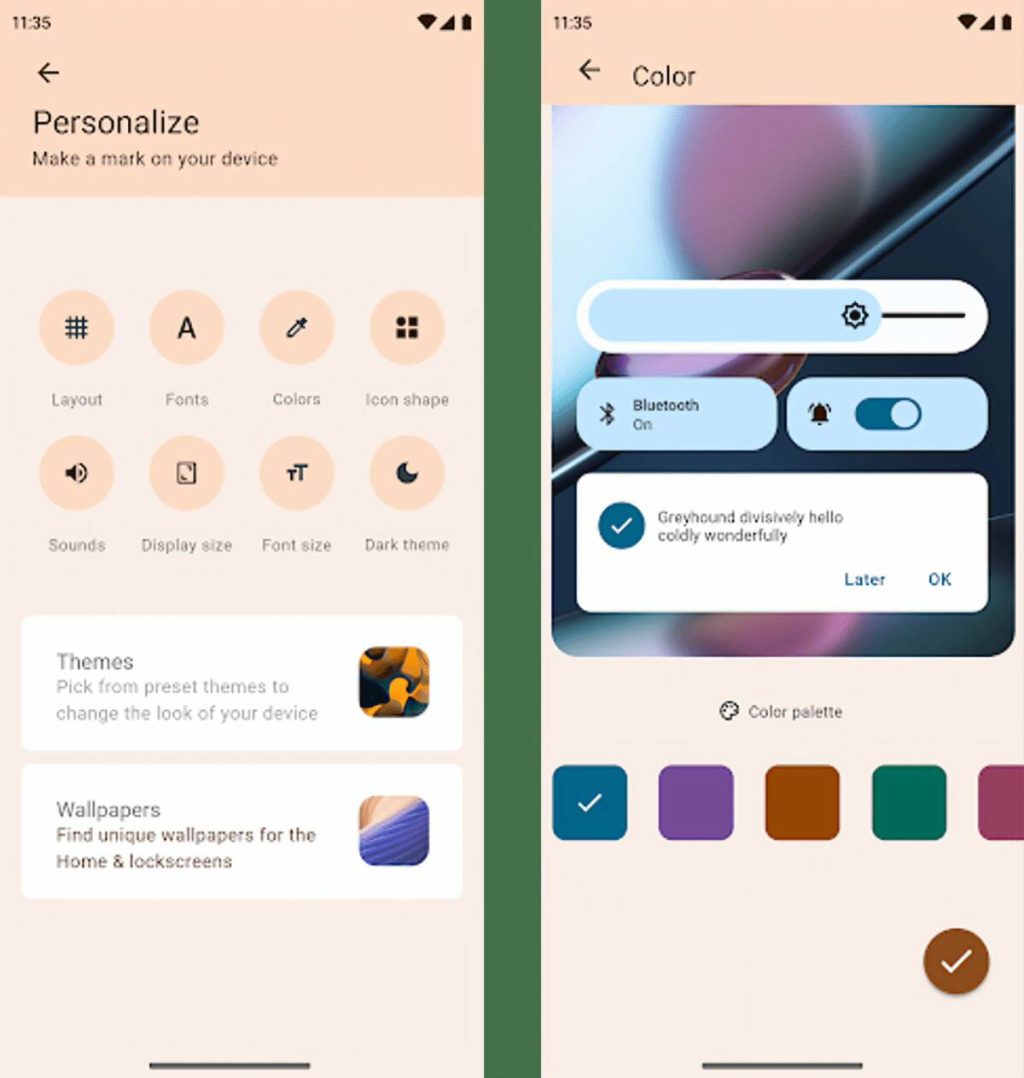Motorola: Android 12 update should start in February – 30 devices required Motorola has so far dropped details about Android 12. According to Android Planet However, the company has now released details about which models are expected to run on Android 12 and the latest My UX build and also that the rollout will start in February 2022. Motorola has not found any evidence of this, so the magazine remains the source for this information.
List of models that will get Android 12:
- Motorola Razr 5G
- Motorola Razr 2020
- Motorola Edge 20 Pro
- Motorola Edge 20
- Motorola Edge 20 Lite
- Motorola Edge 20 Fusion
- Motorola Edge (2021)
- Your Motorola Edge 5G phone
- Motorola Edge Plus
- Motorola One 5G Ice
- Your Motorola One 5G phone
- Motorola Moto G 200
- Motorola Moto G71
- Motorola Moto G51
- Motorola Moto G41
- Motorola Moto G31
- Motorola Moto G 100
- Motorola Moto G60s
- Motorola Moto G60
- Motorola Moto G50
- Motorola Moto G40 Fusion
- Motorola Moto G30
- Motorola Moto G Power (2022)
- Motorola Moto G Pure
- Motorola Moto G Styles 5G
- Motorola Moto G Pro (Business Edition)
- Motorola Edge (2021) (Business Edition)
- Motorola Edge 20 (Business Edition)
- Motorola Edge 20 Lite (Business Edition)
- Motorola Edge 20 Fusion (Business Edition)
Models from last year in particular are missing from this list, so it remains to be seen if other models will get Android 12 later.

A quick look at the innovations in Android 12
- Media UI updates – We update notification designs to make them more modern, user-friendly and functional. In this initial preview, you’ll notice the changes from the tray and controls to the templates themselves. We also tweak transitions and animations across the system to make it smoother. As part of the updates, we decorate Android 12 app notifications with custom content with icons and expand the offerings to adapt them to all other notifications
- Service improvements provided Front-end services are an important way for applications to manage certain types of tasks for users. However, if overused, it can degrade performance and even cause applications to terminate. To ensure a better user experience, we are blocking the front-end service from the background for apps targeting the new platform. To facilitate the transition from this pattern, we are introducing a new accelerated functionality in JobScheduler, which receives increased process priority and increased network access and that works instantly regardless of power constraints such as Battery Saver or Doze. We’ve also integrated quick functionality into the latest version of the Jetpack WorkManager library for back-end compatibility. To reduce user distraction, we are now delaying the display of some Forward Service notifications by up to 10 seconds. This gives short-lived tasks a chance to get them done before their notifications appear.
- Inclusion of extensive content Users love photos, videos, and other expressive content, but pasting and moving that content around apps isn’t always easy. To make it easier for your apps to receive mass content, we’re introducing a new unified API that allows you to accept content from any source: clipboard, keyboard, or drag and drop. You can attach a new interface, OnReceiveContentListener, to UI components and receive a response when content is inserted through any mechanism. This callback becomes the central place for your code to put anything from simple, factory text to tags, images, videos, audio files, and more. For back-end compatibility reasons, we have added the Unified API to AndroidX.
- Modern behavior of SameSite cookies in a WebView In keeping with changes to Chrome and other browsers, the WebView includes new SameSite cookie behaviors to provide more security and privacy, and to give users more visibility and control over how cookies are used on different websites.
- Limited Netlink MAC We continue to support developers with migration to identifiers that can be reassigned under data protection law. In a multi-version effort to simplify migration from Netlink MAC with device scope, in Android 11 we restricted access to it based on API level 30, and in Android 12 we apply the restriction to all applications – regardless of Target SDK level.
- Export components more securely – To prevent apps from accidentally exporting activities, services and recipients, we are changing the android default handling: exported attribute to be more clear. With this change, components that declare one or more target filters must now explicitly declare an android: attribute. You should review your components in the manifest to avoid installation errors related to this change.
- Android update through Google Play We will continue to expand our investment in Google Play System Updates (Project Mainline) to provide apps with a more consistent and secure environment for all devices. In Android 12, we added the Android Runtime (ART) module that allows us to push updates to the base runtime and libraries to devices running Android 12. We can improve runtime performance and health, manage memory more efficiently, and speed up Kotlin processes. All without a full system update. We have also expanded the functionality of existing modules. For example, we offer our compatible media transcoding functions in an upgradeable module.
- Optimized for tablets, foldables and TVr – With more people using apps on big screen devices like folders, tablets and TVs than ever before, now is the time to make sure your app or game is ready. Start optimizing for tablets and creating apps for posts. For the largest screen in the home, the first Android 12 preview is also available for Android TV. With this preview, you can not only bring the latest Android features to your TV, but you can also test your apps on the all-new Google TV experience.




More Stories
Nvidia GeForce RTX 4090: AIDA64 gets Ada spearhead support
Rogue Trader – Details about the first cRPG in the series – CD-Action
t3n – Digital Pioneers | digital business magazine